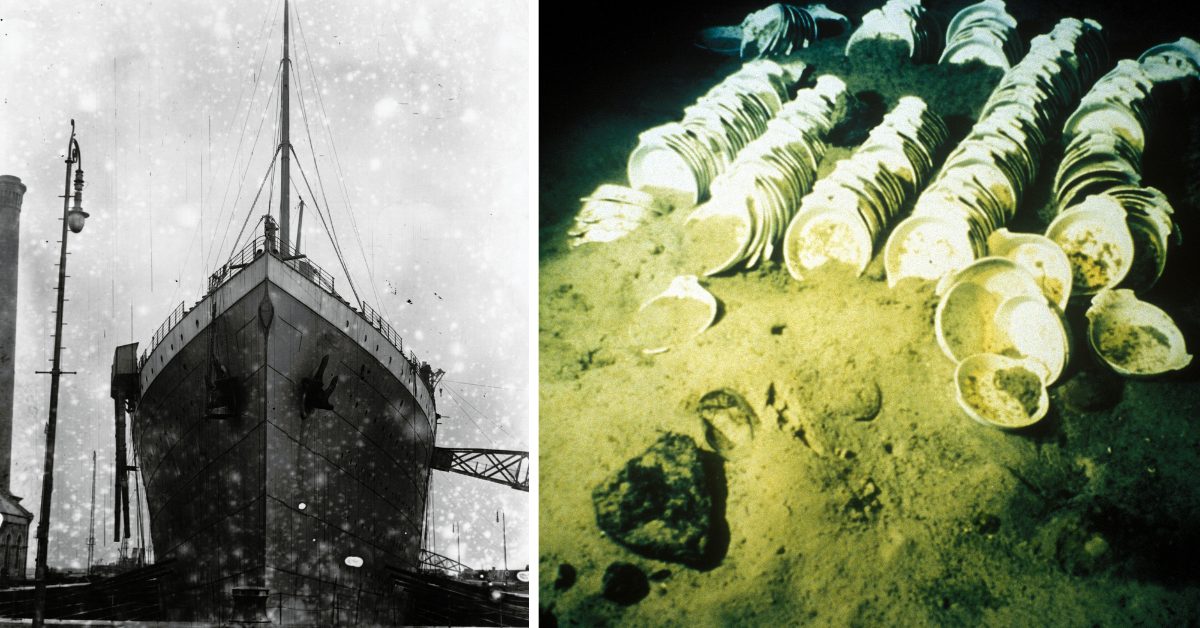In his 1997 movie Titanic, director James Cameron made dining look like a huge social affair for passengers onboard the ship. However, this was only true for one-third of the ships’ guests. The sinking of the ship has been heavily studied by historians but interestingly enough, we rarely think about the food that was consumed by the ship’s passengers during the four days they were aboard the ship. Here we take a look at what a typical day of eating looked like for first, second, and third-class passengers onboard the RMS Titanic.
What food was onboard the Titanic?
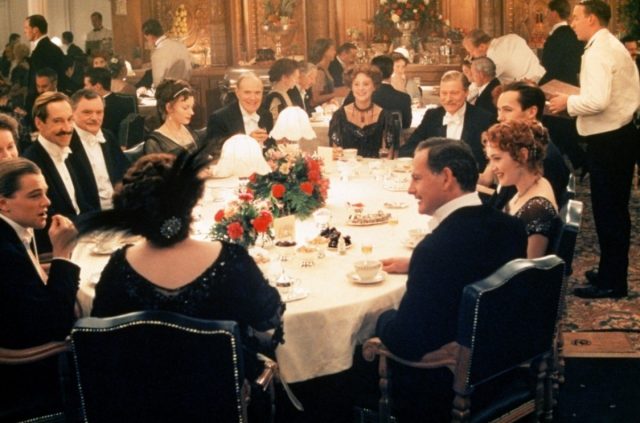
Because the Titanic was a one-of-a-kind luxury ship, the food being served to the passengers had to meet this same standard. Meals were included in the ticket price for nearly all passengers, with the exception of the luxurious à la carte restaurant open only to first-class passengers.
Titanic staff had to ensure that they would have enough to sufficiently satisfy the 2,200 people onboard the ship for what was supposed to be a week-long journey across the Atlantic. Provisions included 75,000 lb. of fresh meat, 7,500 lb. of ham and bacon, 36,000 oranges, 7,000 heads of lettuce, 2,200 lb. of coffee, 10,000 lb. of sugar, 15,000 bottles of ale, and 8,000 cigars.
The food served on the Titanic was based on the economic status and class of each passenger. Traditionally, third-class (or steerage) passengers would have to bring their own food on a trans-Atlantic voyage, so the fact that their meals were included in their ticket price was a vast improvement for them.
First-class passengers
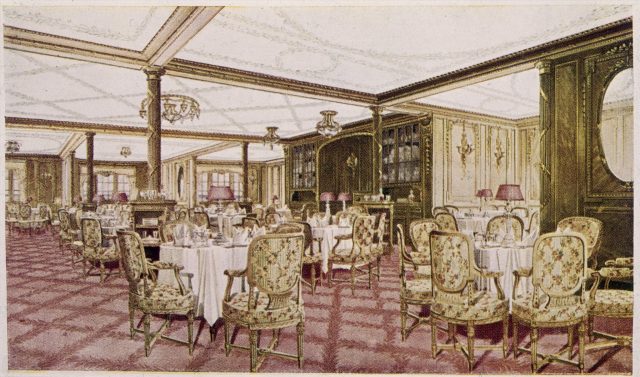
The dining experience for first-class passengers was totally different from second and third-class passengers onboard Titanic. First-class passengers were privy to the finest food on the ship, which was served to them by uniformed stewards on crested china, silver-plate, and glassware. First-class passengers had access to a number of luxurious dining rooms, cafés, and restaurants where second-and third-class passengers were not allowed to eat.
Even though breakfast, lunch, and dinner were included in the ticket price, first-class passengers had the option to dine at the elegant À la Carte restaurant (nicknamed “the Ritz” and pictured above) for an extra price. This exclusive restaurant could only accommodate 137 passengers at one time. However, these passengers also could eat at a dining saloon which was the largest room onboard the ship and could fit up to 554 passengers. Additionally, first-class passengers could take their food in the Verandah Cafè or Cafè Parisien.
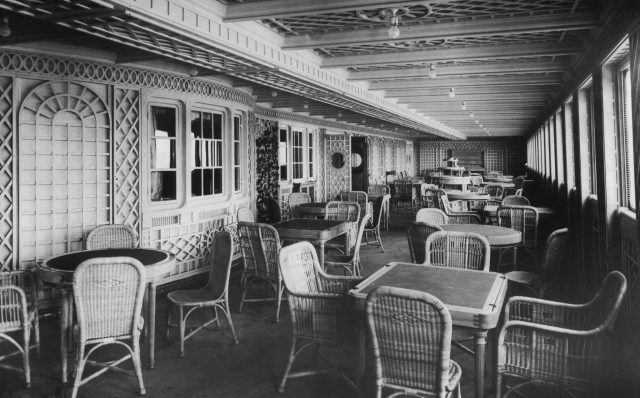
Passengers with first-class tickets had some delicious options when it came to their meals onboard the Titanic. A first-class breakfast included delicacies such as omelets, chops, and steaks cooked to order. There were also four different types of cooked eggs, three types of potatoes, and smoked salmon to choose from.
On April 14, first-class passengers had the option of four appetizers, different types of grilled meats, and an extensive buffet spread for lunch. For dessert, first-class passengers had a delicious spread of English and French cheeses that included Camembert, Roquefort, and Stilton.
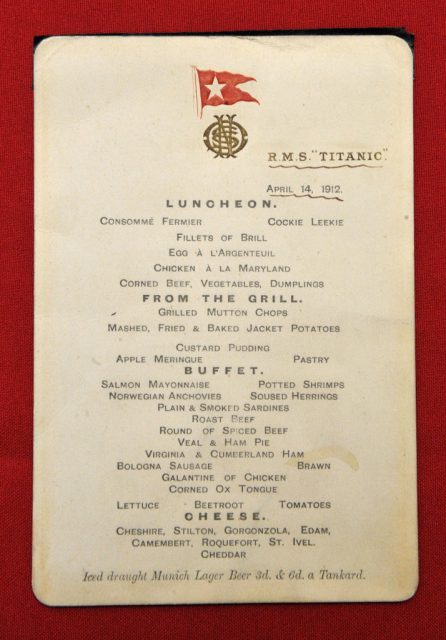
Dinner for first-class passengers was an outrageous social affair. Dinners could consist of up to 13 different courses, each with different accompanying wine. These dinners could last anywhere from four to five hours each. The last meal for first-class dinners included (but was not limited to) oysters, lamb, duckling, and beef, roast potatoes, boiled potatoes, minted peas, carrots and rice, pâté de foie gras with celery, Waldorf pudding, peaches in Chartreuse jelly, and chocolate and vanilla éclairs.
Second-class passengers
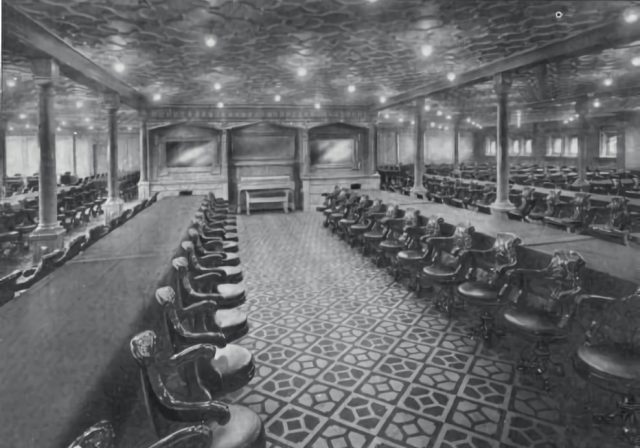
Second-class passengers aboard the Titanic were not afforded nearly the same luxuries that first-class passengers were, but were still served a solid breakfast, lunch, and dinner. The second-class dining saloon was located at the Saloon (D) deck of the ship. Second-class passengers ate at large, rectangular tables that they would share with strangers also making the Atlantic passage. The second-class dining room was not as luxurious as the first-class dining rooms, but was still very grand nonetheless. It could seat all the second-class passengers and was fitted with oak-paneled walls, colored linoleum floors, mahogany swivel chairs, and long tables.
There were fewer food options for second-class passengers, but the food available to them remained a step up from third-class passengers. Breakfast for second-class passengers was still rather impressive, and passengers had the choice of fruit, rolled oats, fresh fish, grilled ox kidneys and bacon, grilled sausage, soda scones, buckwheat cakes, maple syrup, three different types of potatoes, and tea and coffee.
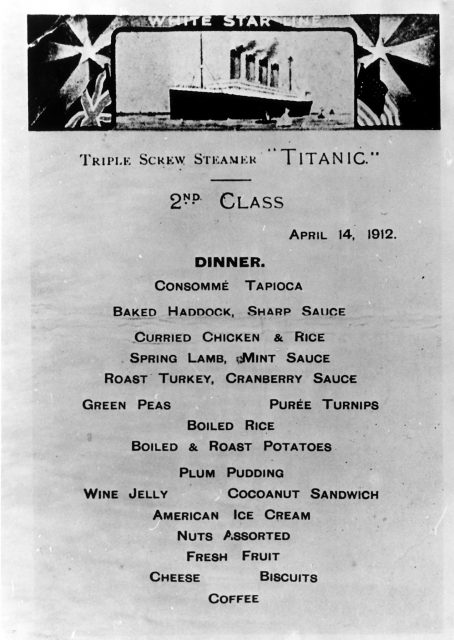
On April 12, 1914, the lunch offered to second-class passengers included pea soup, corned beef, vegetable dumplings, roast mutton, baked jacket potatoes, roast beef, sausage, ox tongue, pickles, salad, tapioca pudding, apple tarts, and fresh fruit. Shown above is a second-class dinner menu from April 14, 1912.
Interestingly enough, the first- and second-class dining rooms shared a gallery. Therefore, it is likely that second-class guests would have often been offered the same sort of dishes as first-class passengers, just without the expensive wine pairings that were included with the first-class meals.
Third-class passengers
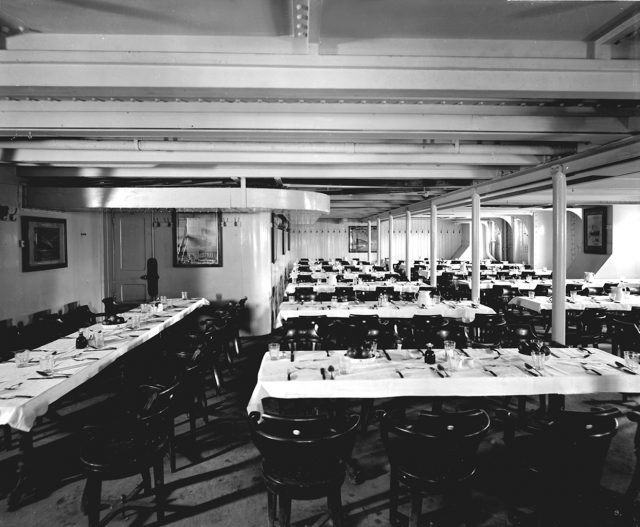
In comparison to the first-class, and even the second-class dining rooms, third-class dining rooms were very plain and lacked any grandeur. The third-class dining room was painted white with bright side-lighting, long wooden, communal tables and chairs, and enameled walls.
Although the food was nowhere near the same standard as that served to first-class passengers, third-class food was surprisingly good quality. Third-class passengers were offered fresh fruit and vegetables daily with their meals. For third-class passengers from countries such as Ireland or Norway, fresh fruits and vegetables probably would have been seen as a luxury.
More from us: Did Jenny, the Cat Onboard the Titanic, Predict the Ship’s sinking?
One interesting difference between the classes was that the third class did not receive dinner. Dinner was thought to be a middle- and upper-class social practice that did not necessarily pertain to the third-class passengers. Instead, third-class passengers would have been served “supper” and tea. Supper usually consisted of gruel, cabin biscuits (to help with sea-sickness) and cheese, while the “tea component” consisted of cold meats, cheese, pickles, fresh bread and butter, and the tea itself.
